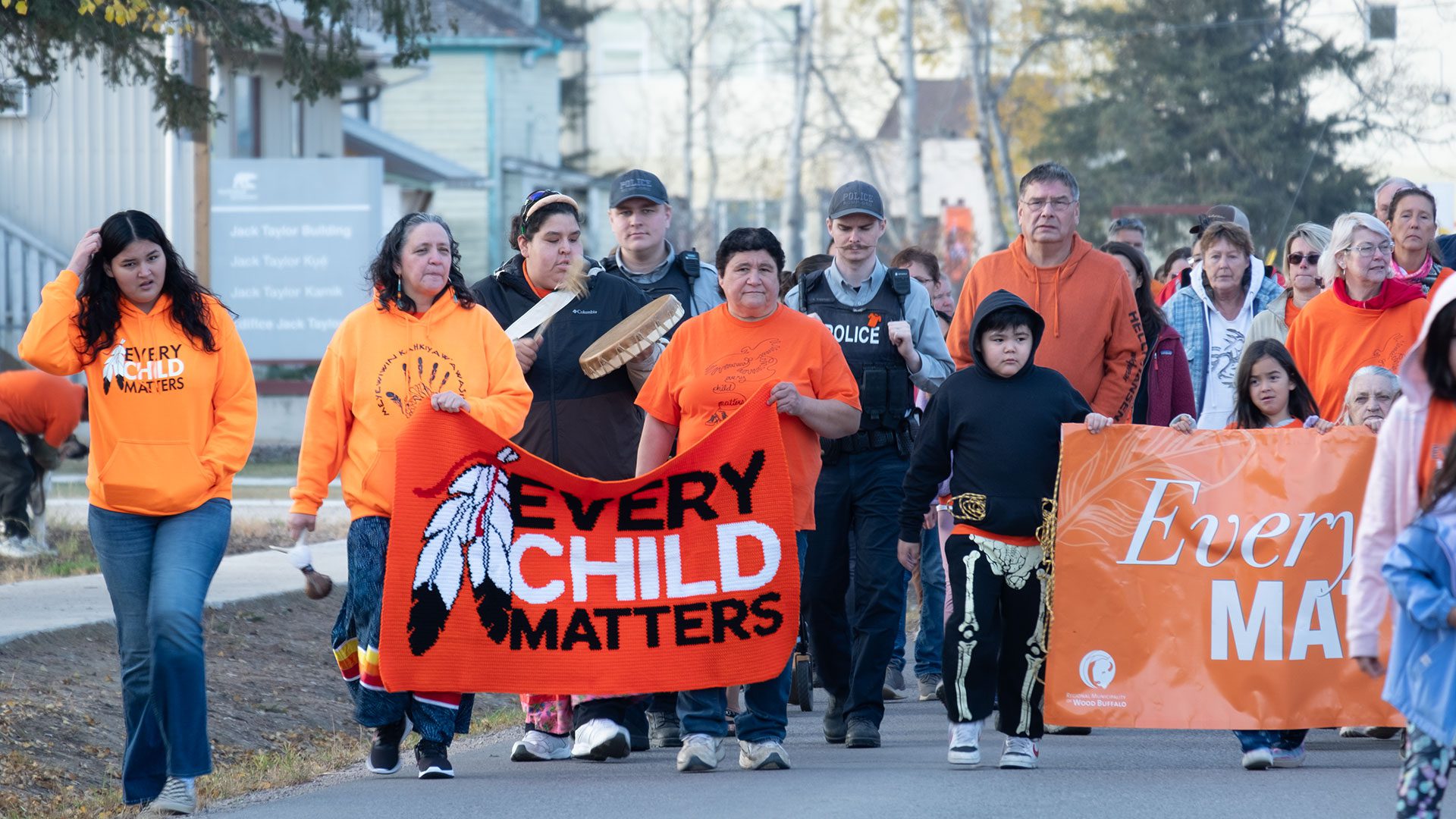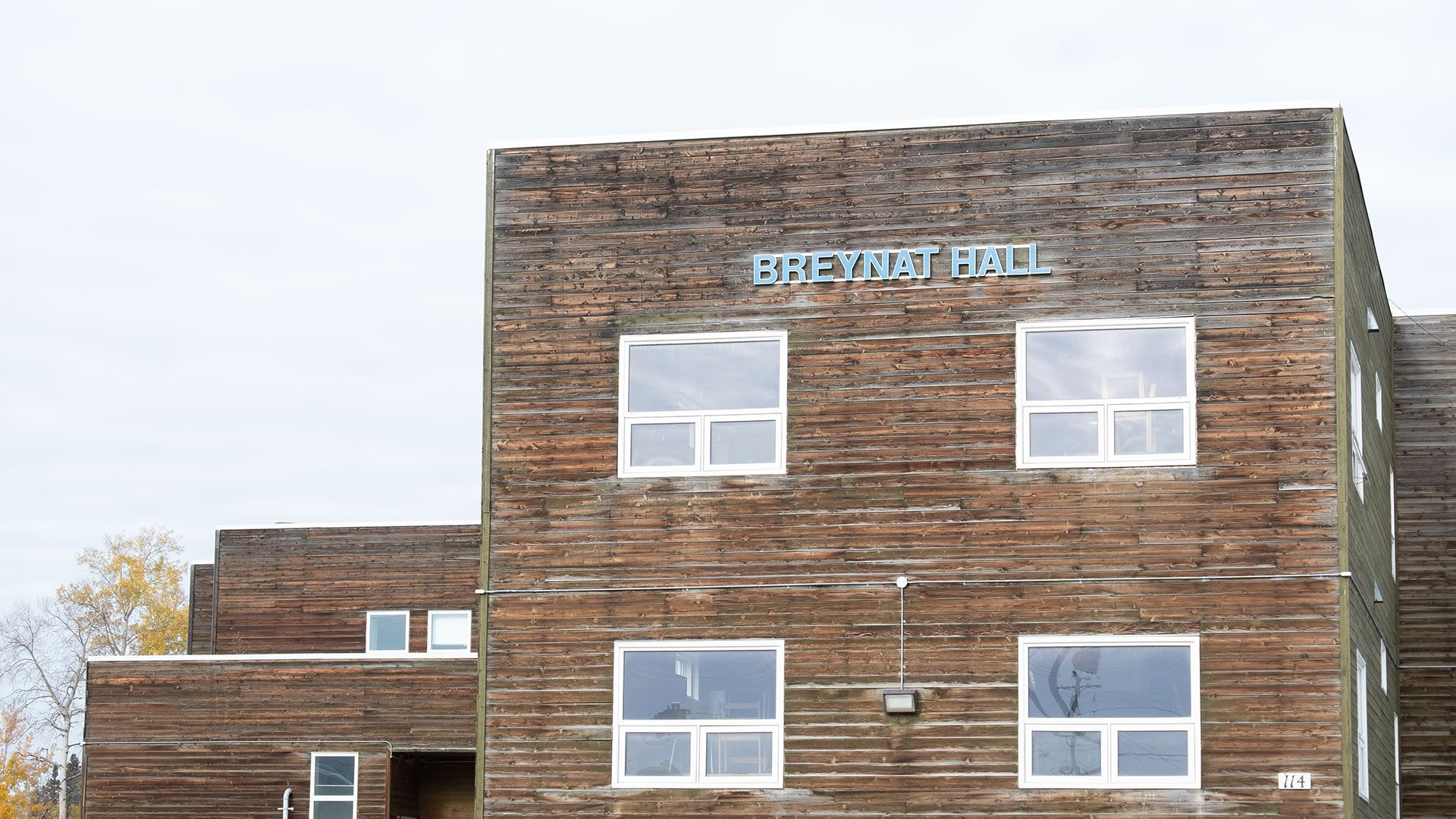Connie Benwell never met her uncle Marvin. That’s because he never returned home from residential school.
“My grandparents died without ever knowing what happened to their baby Marvin,” Benwell said. “He was only seven years old when they were told he had died at school, they didn’t know what happened, just that he died.”
She has carried these stories in her heart all her life.
“Healing has been a lifelong journey. I mean, my mom was in there for 16 years and I couldn’t really talk to her about it, and it wasn’t until I was an adult that I understood how come she couldn’t talk about it,” she said.
This past National Day for Truth and Reconciliation, Benwell spoke openly of intergenerational trauma and joined other Survivors in calling for the demolition of the last remaining former residential schools in the Northwest Territories.
“You know, the graves being found, the unmarked graves being found it just makes it more prevalent, and it just plays on your mind,” she said.
A population of 1,600 makes up the small and picturesque community of Fort Smith in Wood Buffalo in the N.W.T., right on the border with Alberta. The vast of people here are Dene, Cree and Métis.

Joseph Burr Tyrrell Elementary School (JBT), Paul William Kaiser High School (PWK), and Breyant Hall in Fort Smith were residential schools operated by the Roman Catholic Church from the 1950s to the mid-1970s.
When residential schools across the country ceased operations, the federal government disposed of the buildings by either selling them or transferring them to First Nations for administrative purposes. On other occasions, the facilities were left deserted.
In Fort Smith, the buildings that were previously used for Grandin College and Bryant Hall (Fort Smith Hostel) have been repurposed for public and post-secondary use.
Established in 1960 as a seminary for boys heading towards priesthood, Grandin continued to function until 1985, according to the National Centre for Truth and Reconciliation (NCTR).
Post-renovation, the site was extended and new buildings erected, one of which was to become PWK.
The building now referred to as JBT was originally constructed in 1958. Subsequent additions were made in 1962 and 1974, with renovations taking place intermittently from 2007 to 2012.
There is a dearth of observable markers that recount the buildings’ history and alert the public to their dark past. A mere meagre plate on the exterior of JBT, labeled with the words “Fort Smith Federal Day School” attests to the buildings’ history.
“They are just putting Band-Aids on them,” Benwell said. “I think by not saying anything we’re saying it was okay, we’re just turning a blind eye and that’s not right.”
Benwell was a student of La Pointe Hall in Fort Simpson and Breyant Hall, which is presently a single room dwelling at Aurora College’s bacha campus.
“I think Fort Smith is still grieving from it, and once those buildings are torn down we can see new buildings, then maybe new life will come into Fort Smith,” she said.
According to the National Centre for Truth and Reconciliation, a student, Emma Elton, died while attending the Fort Smith Hostel on June 18, 1960.
Earlier this year the territorial government gave this statement to APTN News.
“The GNWT uses a capital planning process when looking at what infrastructure to replace. It takes into consideration the following criteria: In order of importance, protection of people, protection of assets, protection of environment, financial investments, and program needs or requirements. The NWT Schools Capital Standards and Criteria outlines the criteria for major renovations and/or additions. The former residential school buildings in Fort Smith are examined with this same lens.”

Working as the wellness worker for Salt River First Nations, Benwell joined forces with Survivors and intergenerational Survivors from Smith’s Landing First Nations, Fort Smith Métis Council, Mable’s House, the town council, and Uncle Gabes Friendship Centre to host events for National Day for Truth and Reconciliation.
Brenda Chalifoux, wearing her handmade orange ribbon skirt, was in tears as she read a poem written by an aunt about the 215 potential graves at the Kamloops Indian Residential School in British Columbia.
“Until we understand and comprehend the truth and take ownership, then it’s harder to start reconciling,” Chalifoux told APTN News. “There have been 13 calls to action (from the Truth and Reconciliation Commission) implemented in Canada, but it should be much, much higher.”
She championed for the elimination of all past residential schools in Fort Smith.
Califoux attended Akaitcho Hall residential school in Yellowknife. Her children went to school in Fort Smith, and she currently has three granddaughters who are enrolled at JBT.
“We need to have ceremony as Indigenous people to call their spirits back and for family members who have passed on and to have the younger generation, call their spirits back so that we can finally rest and let go of the pain in the trauma that we’ve experienced,” she said.
The South Slave Educational Division informed APTN News that they are presently in dialogue with the local population and will heed the advice of Survivors to decide a course of action to take.
Benwell stated that the demolition of the buildings is not a question of if but rather a question of when. She told APTN National News she thought a monument dedicated to the students would be appropriate.
“There should be a smudge before and after the demolition, and I’d like to see a ceremony take place where the old hospital here was,” she said.









